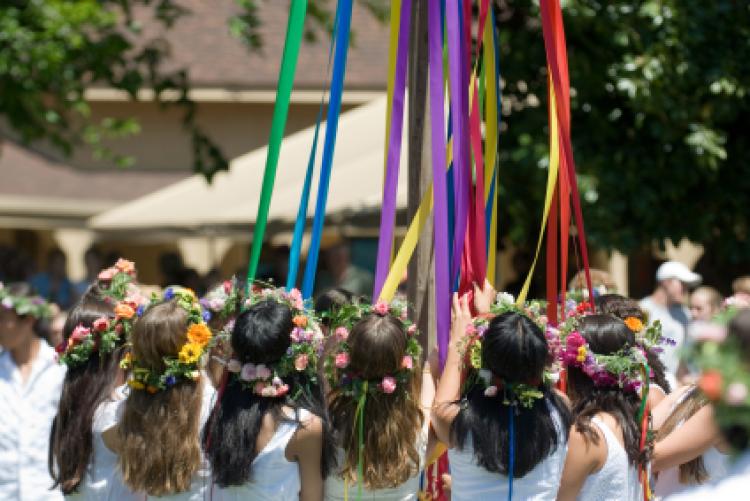The first Monday of May is a bank holiday in the United Kingdom. It is called May Day in England, Wales and Northern Ireland. It is known as the Early May Bank Holiday in Scotland.
Is Early May Bank Holiday a Public Holiday?
Early May Bank Holiday is a public holiday. It is a day off for the general population, and schools and most businesses are closed.

Ancient Summer Celebration
This holiday probably originated as a Roman festival honoring the beginning of the summer season (in the northern hemisphere). In more recent times, May Day has been as a day to campaign for and celebrate workers' rights.
In many places, the first day or the first Monday in May is celebrated as the start of the summer season. People organize events to celebrate the end of the winter season, fertility, and hope of the approaching summer.
Maypoles and Morris Dancing
A particularly widespread UK May Day tradition is maypole dancing. Children, particularly girls, dance around a tall pole, decorated with long, colorful flowing ribbons. The aim of the dance is to create a decorative pattern on the pole with the ribbons. The maypole danicng has roots in Roman Britain around 2,000 years ago, when soldiers celebrated spring by dancing around decorated trees while giving thanks to their goddess Flora.
Maypole dancing These days dancers weave ribbons around a pole rather than a tree.
Another traditional form of dancing, Morris dancing, is also associated with the beginning of May. This type of dancing is nearly always carried out exclusively by men who dress in white with bells on various parts of their costumes and carry scarves and long wooden sticks. The dancing is accompanied by loud accordion music. Groups of Morris dancers often hold displays on the early May bank holiday.
Crowning the May Queen
Other traditions include making floral garlands, decorating houses with flowers and leaves and crowning a May queen as a living image of the Roman goddess Flora. In some areas, girls go out very early to wash their faces in the morning dew. This is supposed to make them very beautiful in the coming year. In Rochester, there is a festival of chimney sweeps. Traditionally, May 1 was the only day in the year that they did not have to work. In Derbyshire, villagers decorate, or dress, the wells with flowers.
May 1 or the first Monday in May is also a day for large marches, particularly London, to celebrate and demand rights for workers. Many aspects of these marches are organized by the trade unions. Some people travel very large distances to join in the marches. In some years, the marches have ended violently, but in recent times they have remained peaceful.
Public Life
The first Monday in May is a bank holiday and many people have a day off work. Many organizations, businesses and schools are closed, while stores may be open or closed, according to local custom. Public transport systems often run to a holiday timetable.
Background
Many types of May Day celebrations date back to fertility rituals performed in pagan times. This is particularly true of events to celebrate Flora, a Roman goddess. Through the ages, there have been some attempts to outlaw this type of celebration, because it was seen as unchristian. However, the celebrations have been remarkably robust.
In Scotland, the Early May Bank holiday has been observed on the first Monday in May since 1871, but was only introduced in the rest of the United Kingdom in 1978. In 1995 and only in that year, this bank holiday was moved to the second Monday in May (May 8) to commemorate the 50th anniversary of the allies accepting the surrender of the armed forces of Nazi Germany. This was the formal end of World War II and is known as VE Day.
Комментариев нет:
Отправить комментарий